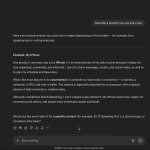Picture this: you’re on a video call with a customer from another country. You’ve practiced your presentation a hundred times, but as soon as they start speaking, you realize you can barely understand their accent. You try to piece it together, but the conversation feels awkward, and the connection between you starts slipping away. This is a reality for many businesses trying to go global. Language barriers and strong accents don’t just make conversations uncomfortable — they can completely derail deals and damage relationships.
That’s where AI steps in like a superhero with an unexpected superpower: accent translator technology. While most of us think of AI as chatbots or robots answering basic questions, its ability to bridge accents and dialects is a game changer that doesn’t get enough spotlight. It’s not just about translating words from one language to another; it’s about making sure everyone feels heard and understood, no matter where they’re from.
Bringing the Human Touch Back to Global Business
Most businesses focus so much on translating their website or marketing materials that they forget about the human voice — literally. When someone calls your support center or joins a live webinar, what they hear can determine whether they trust your brand. AI-powered accent translators help smooth out speech patterns, making a speaker’s words sound more familiar and easier to follow.
Imagine a salesperson from Japan talking to a customer in Texas. Even if they’re both speaking English, the accent gap can be wide enough to create misunderstandings. With AI transforming accents in real-time, it becomes less about struggling to interpret each word and more about connecting on a personal level.
This human element is crucial. In an age where people crave authentic connections, sounding clear and approachable can make or break a business relationship. AI is not replacing the warmth of human voices — it’s enhancing them, letting personality shine without being lost in translation.
Expanding Market Reach Without Borders
Businesses often shy away from entering new markets because they’re worried about cultural and language obstacles. Even with a great product, it’s tough to convince customers when you can’t speak their language fluently or if your team struggles with heavy accents. AI is changing that narrative by making expansion less intimidating and more achievable.
With smart language models and accent translators, businesses can confidently approach audiences they previously avoided. Instead of hiring entire teams of local speakers or spending big on intensive language training, companies can use AI to communicate clearly and effectively from day one.
This opens the door to new opportunities. A startup in Brazil can now sell software to clients in Germany without worrying about thick Brazilian Portuguese accents causing confusion. A small fashion brand in India can do live shopping events for an American audience and sound as if they’re speaking local English. The possibilities are endless when you’re not held back by language quirks.
Personalized Experiences That Feel Like Home
People don’t just buy products; they buy experiences. That’s why personalization is the big buzzword in marketing these days. But what often gets missed is how much personalization depends on clear communication.
AI doesn’t stop at just translating words or smoothing accents. It can understand cultural nuances, slang, and preferred ways of speaking. It can help tailor the way messages are delivered, making interactions feel more natural and intimate. For example, an AI tool might recognize that a customer in London prefers a more casual, friendly tone, while someone in Seoul expects a polite and formal approach.
When a business can speak to you like a close friend — not a distant, awkward stranger — it instantly builds loyalty and trust. AI-driven communication tools empower brands to sound local, no matter where they’re based. It’s like having a super talented global team without actually hiring hundreds of people around the world.
Turning Friction Into Opportunity
Language barriers have always been seen as a headache, something to work around or avoid altogether. But with AI, these challenges can actually become competitive advantages. Being able to engage customers in their own language and accent doesn’t just reduce friction — it delights them.
Companies that embrace AI language and accent solutions aren’t just solving a problem; they’re creating new opportunities to wow their customers. Imagine a world where a Spanish-speaking grandmother can easily shop online from a French boutique, or a Nigerian tech entrepreneur can pitch ideas to investors in San Francisco without feeling self-conscious about their accent.
The future of business isn’t just about crossing borders; it’s about making sure no one feels like an outsider when they get there. AI is quietly making that future possible, helping us focus on what really matters: human connection.
The Takeaway
In the end, it’s not just about selling more products or reaching more markets — it’s about making people feel seen and heard. AI’s ability to break down language and accent barriers is helping businesses move beyond words and focus on building relationships.
We’re entering a time when no one has to say, “Sorry, can you repeat that?” on a call. Where customers around the world can feel like they’re talking to someone from their own neighborhood. And where accents and languages stop being walls and start becoming bridges.
So the next time you think about AI, don’t just imagine cold, robotic answers. Think about how it might make your next conversation with a customer smoother, warmer, and more human than ever before. That’s where the real magic lies.
Lynn Martelli is an editor at Readability. She received her MFA in Creative Writing from Antioch University and has worked as an editor for over 10 years. Lynn has edited a wide variety of books, including fiction, non-fiction, memoirs, and more. In her free time, Lynn enjoys reading, writing, and spending time with her family and friends.















